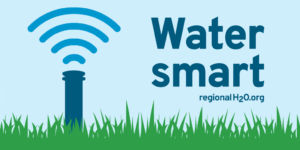5 Easy Steps to Keep Your Garden Hydrated This Summer
As summer heats up you don’t have choose between conserving water or letting your garden cook in the summer sun! Use these five tips to maximize your watering potential and keep your home garden hydrated.
1. Mulch, mulch, and mulch some more!
Cover your soil with a blanket of organic material such as straw, leaves, shredded paper or cardboard, or bark. This will moderate soil temperature, prevent runoff and evaporation, and hold moisture in the for longer periods between waterings.
2. Water deeply.
Less frequent, deeper waterings are more effective for most plants than frequent, shallow waterings. Plant roots will grow stronger and healthier, and you will not need to water as often.
To check whether it’s time to water, push your finger down into the soil. If it is still moist a knuckle or two deep, then it doesn’t need water yet. If it’s dry, then give the soil a nice long, deep soak so that the water reaches the root zone.
3. Use drip irrigation and an automatic timer.
Large amounts of water tend to run off the soil surface rather than being absorbed into the lower layers. For this reason, it’s best to water slowly, allowing the moisture to soak into the soil and permeate down to the root level of the plants.
Drip lines, which are available at nurseries and home centers, provide very slow and effective irrigation. If your plants suffer from various leaf diseases, drip watering may help to prevent these diseases by keeping the leaves dry.
An automatic timer can be used for watering your garden, as well. Whether you use a drip system or a sprinkler, both can be attached to timers, which you can set for automatic, daily or regular watering cycles.
4. Mix water-absorbing materials into your soil.
Organic material, such as coconut coir, peat moss, or even compost, will absorb water, retaining moisture that plants can use during dry spells. Organic material also improves the structure, aeration and overall health of the soil, resulting in better long-term success for your garden.
5. Check your weekly watering number!
The Weekly Watering Number is the amount of water in inches that your lawn will need that week. You can also use the Weekly Watering Number (WWN) for watering other types of plants, by using these general guidelines.
- Shrubs: 50% of the WWN
- Perennials: 50% of the WWN
- Vegetables: 75% of the WWN (new starts may require more water)
- Trees: Newly planted trees need regular watering for up to the first couple of years, while established trees may need a deep soak or two in summer.
Be sure to check with your local garden center or landscape professional for more information that is specific on how much water your plant needs.
Where Does The Weekly Watering Number Come From?
The Regional Water Providers Consortium (www.conserveh2o.org) contracts with a weather forecasting service to provide a free weather forecast and Weekly Watering Number each Thursday (April ‐ September). The WWN is based on historical data (evapotranspiration, rainfall, and other data points) from the previous week, but it is used to determine how much to water lawns and landscapes during the current week.
You can find your weekly watering number at www.conserveh2o.org or right here on CRW’s website at www.crwater.com/conservation.





